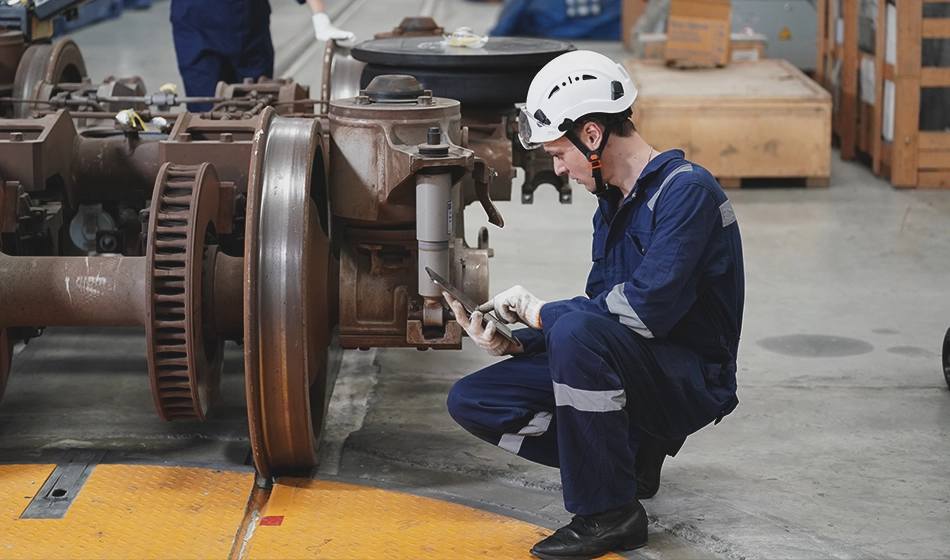Why Maintenance Teams Can’t Afford Bad Parts Data (and What Works Instead)
Quick Summary Poor parts data is one of the most overlooked risks in MRO. Duplicates, metadata gaps, and workforce turnover drag down uptime, cost,...
3 min read
Linda Piercy
:
Jun 12, 2025 6:49:30 AM

Manual spare parts searches are slowing down industrial operations, draining resources, and putting teams at risk of burnout. This post explores the hidden costs of outdated search processes and how automating spare parts identification with tools like Partium delivers measurable gains in speed, accuracy, and efficiency.
Manual parts lookups lead to productivity loss, workflow delays, and technician fatigue
Automation improves spare part accuracy, streamlines collaboration, and surfaces critical data
AI-powered tools like Partium cut search time from hours to seconds
Automating spares identification unlocks long-term strategic benefits for maintenance and supply teams
The future of MRO and field service starts with smarter, automated spare parts search

In today’s high-velocity industrial landscape, delays cost money and manual inefficiencies compound quickly. Yet many maintenance and supply chain teams still depend on outdated, manual processes to identify and locate spare parts.
Technicians waste time flipping through catalogs, navigating clunky digital systems, or relying on “tribal knowledge” from senior staff. These workflows may seem familiar, but they create unnecessary friction—and significant hidden costs.
Manual parts identification simply can’t keep pace with modern maintenance demands. It’s time to rethink how spares are sourced, shared, and tracked across operations.
Even small inefficiencies scale quickly. A single technician spending just 30 minutes a day on spare part lookups loses over 125 hours per year. Across a large team, that becomes thousands of wasted hours.
When part identification stalls, repairs stall. Production schedules shift, preventive maintenance is delayed, and emergency fixes become more common.
When only a few people know how to identify the correct spare part, operations become vulnerable. Absences, turnover, or retirements expose knowledge gaps and increase error rates.
Manual parts lookup is tedious, repetitive, and disengaging. Technicians want to fix problems—not search for spares buried in spreadsheets or catalogs.
Manual systems don’t track part search behavior or bottlenecks. Without digital footprints, there’s no way to refine workflows, reduce error rates, or improve spares inventory planning.

Automation changes how MRO teams work—from reactive and manual to strategic and efficient.
AI-based visual search lets technicians snap a photo of a spare part and get an instant match. This eliminates delays and allows maintenance work to continue without disruption.
With digital spare parts platforms, everyone accesses the same information—whether in the office, on the shop floor, or in the field. No more “go ask Dave” dependencies.
Removing low-value, repetitive tasks empowers technicians to focus on diagnostics, repairs, and optimization. This improves job satisfaction and technician retention.
Automated systems capture valuable metadata: part usage frequency, failed lookups, supplier fulfillment rates. This enables more accurate planning, smarter sourcing, and predictive maintenance strategies.
Modernizing spare parts search isn't just about speed—it's about resilience and scalability.
When your team can identify and retrieve parts fast, uptime improves and service SLAs are easier to meet.
Manual processes collapse under scale. Automation ensures consistent, high-quality performance across sites, shifts, and regions.
Free from the burden of manual spares lookups, teams gain bandwidth for innovation—such as rolling out predictive maintenance or refining asset strategies.

Manual parts searches are no longer viable in high-performance environments. They block efficiency, obscure decision-making, and increase operational risk.
With Partium’s AI-powered spare parts identification platform, organizations gain:
Visual recognition from photos or screenshots
OCR, barcode, and Data Matrix scanning for fast ID
Integration with ERP, CMMS, and catalog systems
Multilingual support for global teams
Real-time data on part usage and search trends
It’s more than a search tool—it’s a spares intelligence platform designed for speed, accuracy, and scale.
Outdated part search methods might seem harmless day to day—but over time, they add up to lost time, higher costs, and frustrated teams.
By automating your spare parts search, you improve more than workflows. You enable your technicians to perform at their best, reduce procurement risks, and unlock real-time visibility into one of the most critical areas of industrial maintenance.
Make the switch from manual to intelligent. Your spares process should work as hard as your equipment does.
Parts Management Masterclass: Smart Tools and Strategies
Learn how to modernize your spares strategy using AI-powered tools. This masterclass covers visual search, catalog optimization, and actionable steps for streamlining MRO processes across your organization.
Maintenance World:Artificial Intelligence: The Future of Searching for Spare Parts
McKinsey explores how world-class organizations use smarter MRO practices to unlock higher asset uptime, reduce unnecessary inventory, and create measurable cost advantages through data-driven maintenance.
Ready to eliminate guesswork from your spare parts identification?
Learn how visual parts search and AI-powered automation help you find the right part—faster, smarter, and more reliably.
👉 Visit www.partium.io to see how your team can modernize spare parts search and transform maintenance from the ground up.

Quick Summary Poor parts data is one of the most overlooked risks in MRO. Duplicates, metadata gaps, and workforce turnover drag down uptime, cost,...

Quick Summary AI is transforming railway maintenance by reducing manual effort, accelerating part identification, and preventing unplanned downtime....

Quick Summary Maintenance, Repair, and Operations (MRO) processes are often overlooked—yet they hold some of the biggest cost-saving opportunities in...